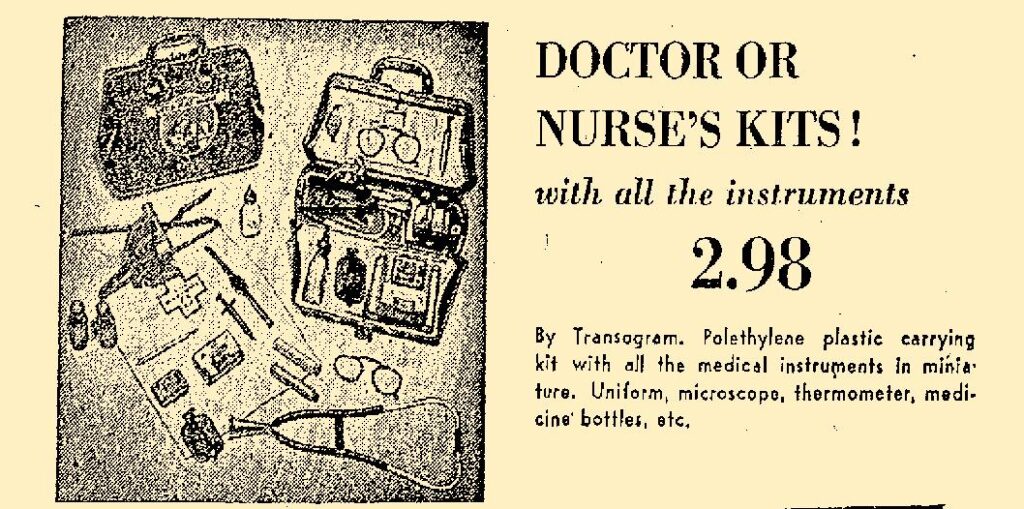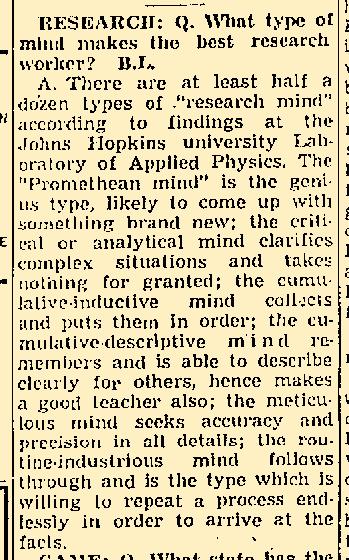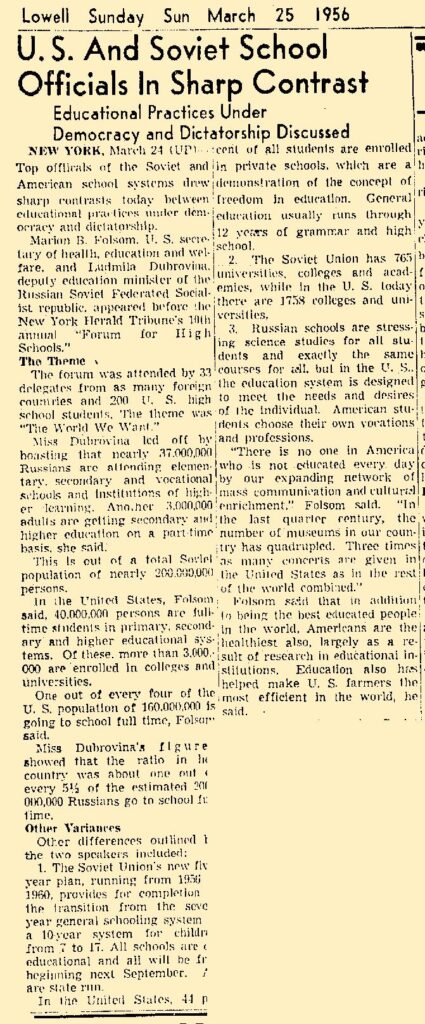It was several decades after my graduation from St-Joseph Boys School in 1957 that I realized that my high school preparation for a career in science and engineering had been greatly limited due to budgetary constraints.
Do I blame the Marist Brothers, the teaching order at our school, for this unhappy set of consequences? Were they seeking to limit our understanding of the physical world for religious reasons going back to the early Middle Ages? This explanation did not seem likely in America in 1957.
But, why were some Catholic high schools in the area not also bereft of a solid science program? In contrast, they seemed to be doing well.
There were many questions, but few answers that made any sense to me.
Mostly, I believe today, it was the result of poor funding for the school’s laboratory equipment such as a microscope, chemical supplies, test tubes, a Bunsen burner, pipettes, syringes, etc. that greatly limited any student’s progress in understanding the basic rules of nature outlined by The Periodic Table.
Progress in chemistry, for instance, hinges upon research, tests, experiments, measurements and statistical evaluation of results. Unlike other academic disciples, science requires constant vigilance with checks and rechecks and open debate on subtleties.
Although other high schools in the area, including Keith Academy and Keith Hall, Lowell High, Dracut High, Chelmsford High and Notre Dame Academy were actively participating in community efforts that encouraged a knowledge of science (biology, chemistry and physics), St. Joseph Boys seemed to be more focused on the development of the secular and religious essence of the Marist educational history over the centuries.
We ought to note that such enthusiasm for the foundational tenants of Marcellin Champagnat, the founder of this teaching order in France circa 1837, may have been praiseworthy, but the “missing scientific links” for students at our school in the mid 1950s was problematic for anyone hoping to enter an engineering school. Certainly, LTI was one of the schools looking for a strong HS background in the sciences upon entering.
Scientific Aids and Toys available in that Time Period
Any reader of the Sears and Roebuck catalog of the day was aware that science toys and kits were, then, available for children to enjoy in home study projects. Naturally, many parents were afraid that such toys might prove dangerous to the user.



In the Bolduc household, however, these parental concerns were purely academic in nature. Learning scientific facts at school was certainly a major topic of interest. But, this goal had to be reached safely with well-trained instructors in charge. We, students, always felt that our Marist Brothers were excellent and fully capable for the task. Yet, there was a lack.
It is at this juncture that I faced the biggest academic challenge of my entire life when I attempted to undergo a four-year-long transition from “every man” to “junior scientist”, an awesome change at the Lowell Technological Institute.
Much of the rest of my story starts at this time.
An Important and very Technical Side Issue
The Marist teaching order is spread over many the Earth’s literary countries and there are frequent exchanges between these teaching groups regarding different approaches to knowledge transmission.
For details, see: Marist_Brothers and Marist Brothers-USA
There were many, friendly exchanges between Marist Bothers stationed in New York and those teaching in the neighboring state of Massachusetts. Indeed, there had been several teacher exchanges between these two groups over the years.
It seems, however, that the NY-based group suspected that the Mass-based students (my classmates and me) were not being taught the same in-depth theory of the atomic nucleus that admissions officers at MIT and LTI expected to see. Subtle differences in a student’s understanding of the Periodic Table could be quickly measured through this extensive set of tests that the NY Board of Regents had prepared.
So, during the late spring of 1957, our good Marist Brothers announced that the whole class was to be given an exam created by the NY Board of Education, which was used there to gauge a student’s basic understanding of elementary processes happening within an atom’s atomic nucleus. Naturally, the actual announcement given to the 30 graduating seniors in our class was less formal, so nobody seemed concerned about this unexpected, upcoming exam. We were even told that we did not have to study for it.
So, it bode well with us, students, who were looking forward to an easy weekend with no special studying.
On the following day, the whole senior class was focussed on answering the difficult quesstions that the three-hour technical exam posed.
How did everyone do? We needed to wait until the following day before the official results were posted.
Never, in the previous three and one half years under the tutelage of these Marist brothers, had I seen such visible dismay and consternation on the faces of my teachers. Everyone had failed miserably the entire set of NY exams.
Naturally, I also felt sad and inadequate with these results, but what might we do – the brothers, parents and classmates – to suddenly get onto the right path?
Was it already too late for anyone, who was hoping to apply to MIT, LTI or Cornell to take corrective actions in pursuing their further education?
This question was left unanswered for the members of class 1957, but, hopefully, was properly addressed in the following years.
Sometimes, life can seem to be uncaring and indifferent to our precious hopes and expectations.
US and Soviet Forms of Education – International Challenge
Before there was the Space Race, we were trying to convince ourselves and the rest of the world that our approach to human happiness was the best. Of course, the Soviets felt differently. The following article outlines these not-so-subtle differences.

The essential question was clear to everyone. Does the world want democracy or dictatorship?
In essence, the educational quality found in our high schools and prep schools was facing serious competition from the Soviet Union, and it indicated that a stronger emphasis needed to be placed on the hard sciences (chemistry, physics, botany, biology, geology, the environment, etc. ) in the coming decade.
The challenges ahead would be daunting.
